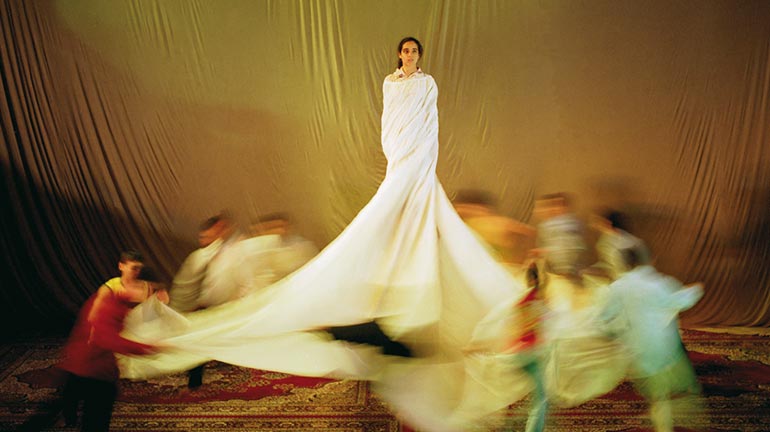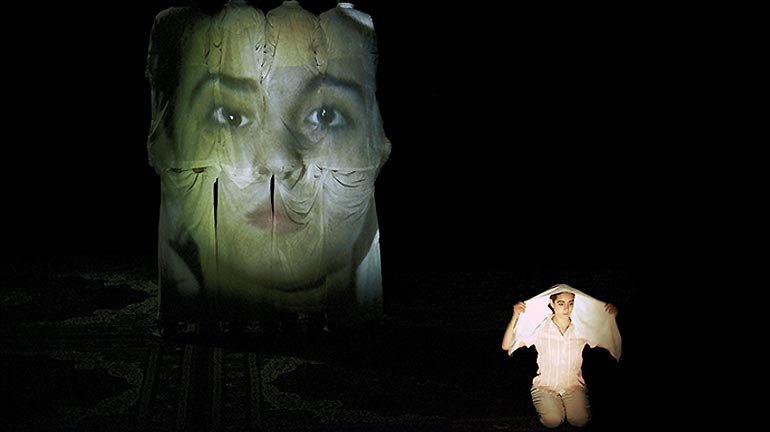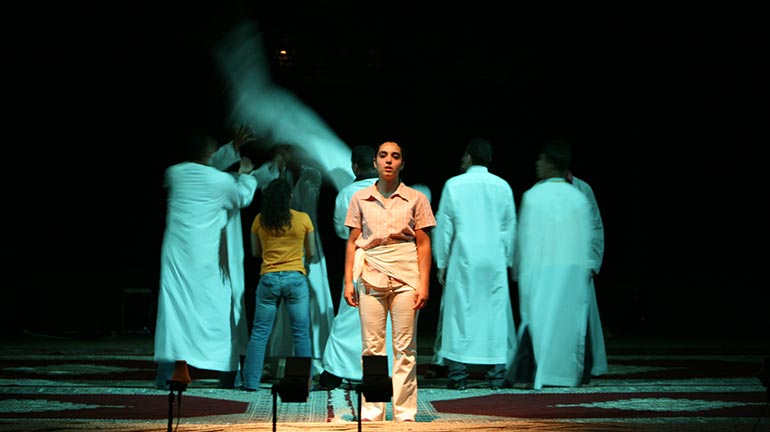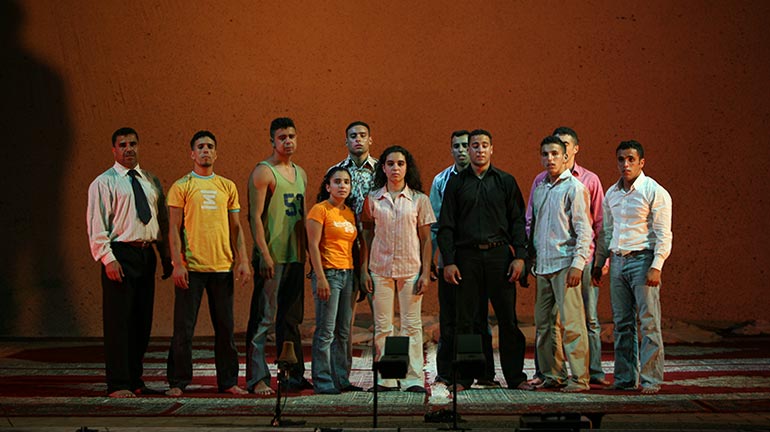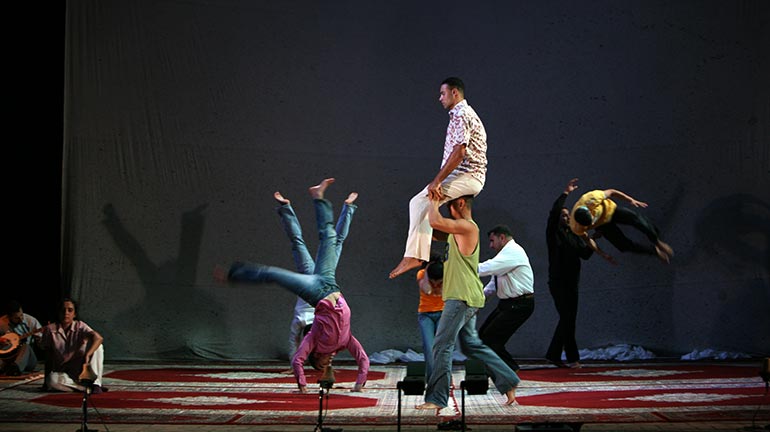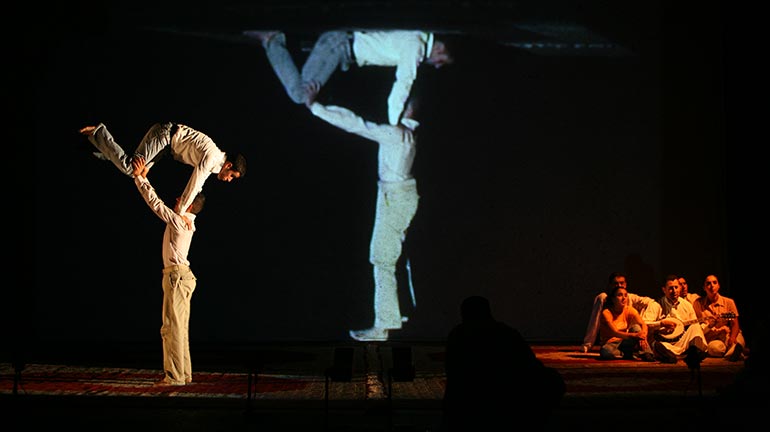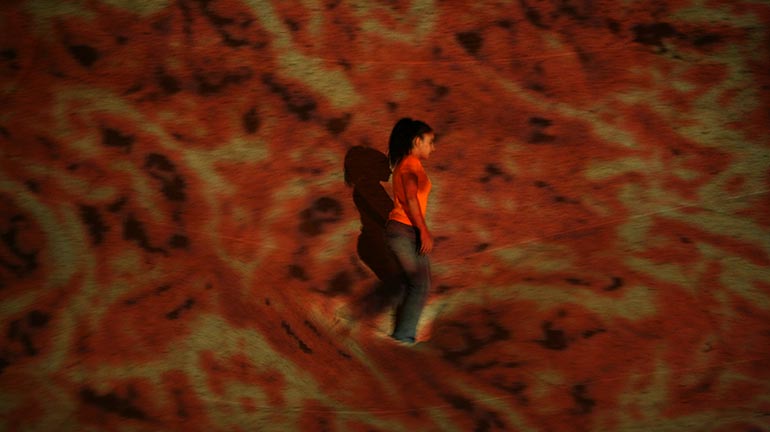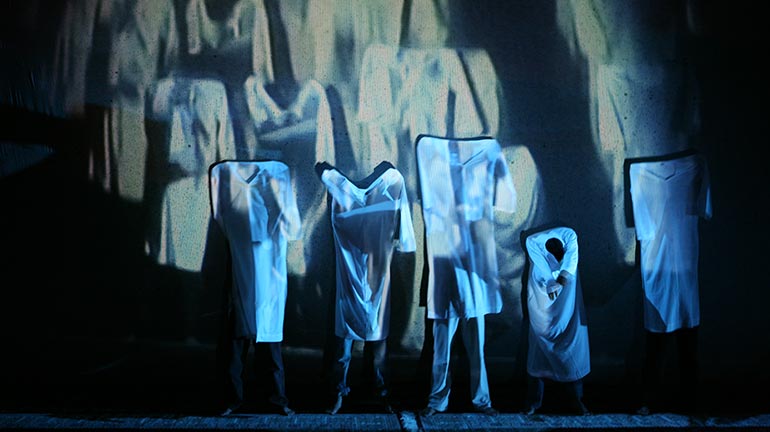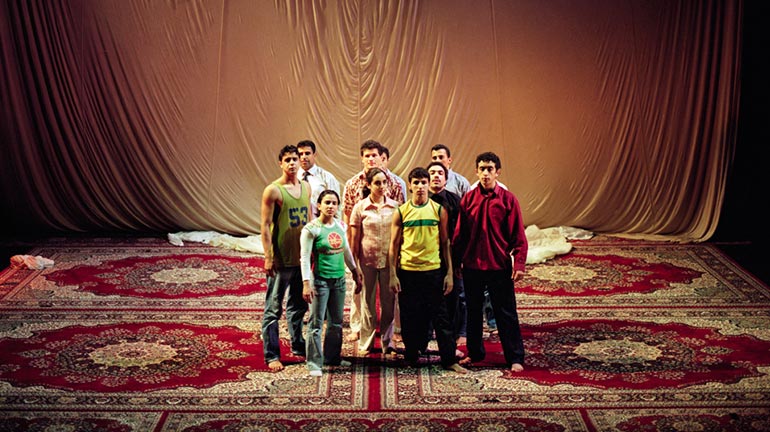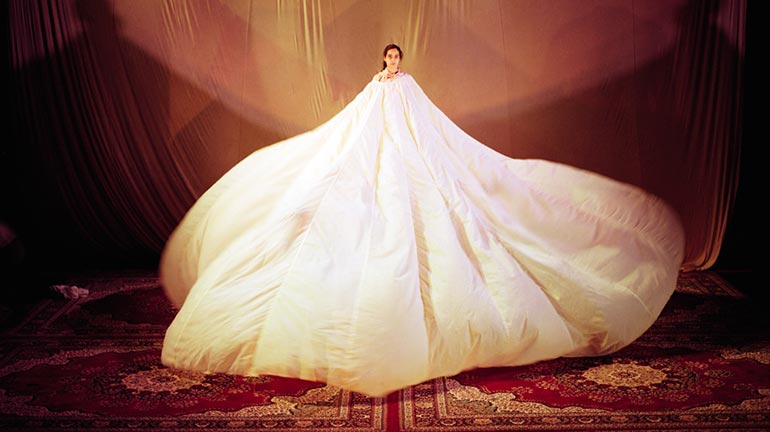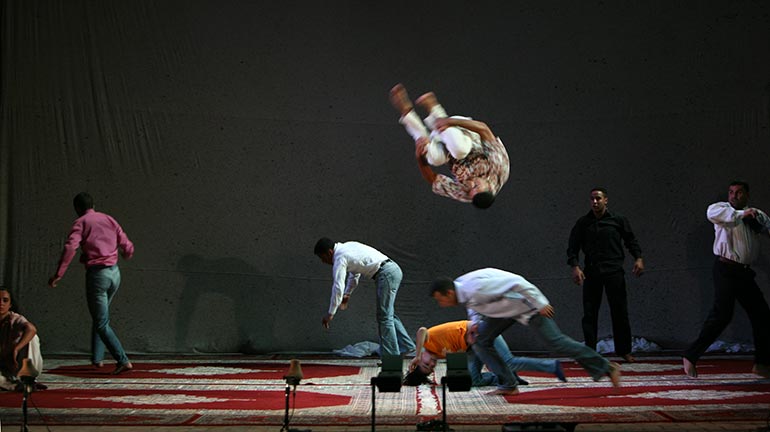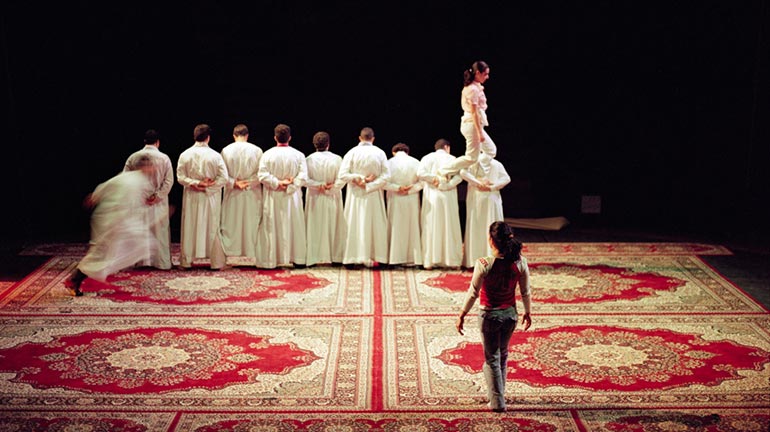de page
Taoub
TAOUB
a piece by Aurélien Bory performed by The Acrobatic Group from Tanger (creation 2004)
Where did the idea of working with acrobats from a different culture from your own originate?
Let’s say that this project didn’t come from me. Sanae El Kamouni met me at the Théâtre Garonne in Toulouse, where she was on a course, while I was working on Plan B. She discovered my way of fusing circus, theatre, contemporary art and was very interested in this approach. She suggested that I should write a show in Morocco, where there are acrobats but no creation. I was already familiar with Moroccan acrobatics and I knew it to be unique and remarkable. I then suggested giving a two-week course in Tangiers, to meet acrobats and see what meaning such a project might have. One month later, I decided to write a show which would use only cloth as the medium for each scene, I wanted a mobile, fragile scenography relating to Tangiers. That’s where the title comes from, TAOUB, Arabic for “cloth”.
How did you meet the artists? Why did you choose them in particular for this collaboration?
We held auditions for this course all over Morocco, since acrobatics is practised mainly in the south, and to our great surprise, we found many acrobats in Tangiers. The first ones to present themselves were the Hammichs, who came as a foursome, including two girls, and also some friends. They were all very good acrobats, and I wanted to compose a group based on this core, taking advantage of the fact that they had known each other for a long time, even if they hadn’t formed themselves into a group. It is this family “mesh”, this organisation as a group which interested me. Sanae and I decided to give them a name after the creation of Taoub: Le Groupe acrobatique de Tanger [the Tangiers Acrobatic Group].
What memories do you have of that meeting?
The enormous gap. They had never approached this kind of thing, from near or far. Nor did they understand what a French artist was doing there with them, merely adhered shyly to what I was proposing. Everything changed when I asked them to bring their family and friends for a presentation of the work. Then they understood through the eyes of the others what they themselves were doing. When they heard their relatives laugh, for example, they clicked.
In the show, one really senses the result of a genuine exchange between your know-how and theirs. What did you actually do to achieve this great result?
I wanted them to understand that I wasn’t going to use their numbers, that we were going to invent new movements by adapting their know-how. They would see me reflect, improvise and try to find ideas, which derived from their skills and the concept of the show. I wanted them above all to be players and witnesses of a creative process and not the repetition of a fixed form. Therefore, I did not situate myself by comparison with their numbers, but on another plane. I explained to them that what we were doing was not a circus, but definitely theatre. They approved.

The image factory
19 December 2007
In Morocco, acrobatics were originally a warrior tradition. Handed down from generation to generation, they have become an art form that has never before been featured in a theatrical performance. Director Aurélien Bory discovered 12 excellent acrobats in Tangiers, formed around the Hammich family of seventh-generation acrobats. Taoub, which means “fabric”, is their first show, and a totally new experience! The acrobats’ bodies, like the threads of a single piece of cloth, merge to tell bits of private, social, cultural and universal history.
On an empty stage, white pieces of fabric are their only accessory, moving and transformed as a floor, awning, blanket, tent, trampoline or garment, paying tribute to women, modifying their identity, inhabiting magical or real worlds, in the tradition of acrobatic feats and local festivals. As they merge, each acrobat becomes a link in a veritable image factory. Skilled craftsmen, they weave homogenous worlds with the most varied materials: their bodies, video, light, voice and music.
Twelve Moroccan acrobats invite the audience to discover their land.
CritiQUE
Taoub is a kaleidoscopic voyage through Morocco. Without ever exploiting the acrobats’ skills, Aurélien Bory invents fun and innovative situations that break down the clichés on this country. Initially all dressed alike as members of an austere fraternity, the troupe changes costumes, becoming modern men and women. As they play with light, video and fabrics, they draw the audience into a variety of landscapes, mountains, desert, sky and even fairs. The poetic and fantastic situations, the rigorous staging, the talented and complicit acrobats, and the beautiful traditional music are just some of the things that make this show, which has been circling the globe for the past three years, something really special.
Dominique Duthuit
People pass in and out of our lives like a shuttle runs back and forth across a loom.
Chinese proverb
distribution
With Jamila Abdellaoui, Jamal Benali, Adel Chaaban, Mohammed Achraf Chaaban, Abdelaziz El Haddad, Najib El Maimouni Idrissi, Amal Hammich, Mohammed Hammich, Younes Hammich, Samir Lâaroussi, Yassine Srasi, Younes Yemlahi.
And Joël Abriac or Cécile Herault
Writting and directing Aurélien Bory
Director assistant and video Pierre Rigal
Trampolin Julien Cassier
Lights creation Arno Veyrat
Technical direction Joël Abriac or Cécile Hérault
Costumes Mahmoud Tabit Ben Slimane
Management and booking Sanae El Kamouni
Tour management Florence Meurisse
PRODUCTION Institut français du Nord
With the support of Compagnie 111, Organisation Internationale de la Francophonie, Ferme du Buisson – scène nationale de Marne la Vallée.
With the help of du Service de coopération et d’action culturelle de l’Ambassade de France au Maroc.
Scènes du Maroc benefits from the support from Fondation BNP Paribas, Fondation BMCI and Institut Français du Maroc.


